What The Tom’s Team Played This Weekend: 'Crossout'
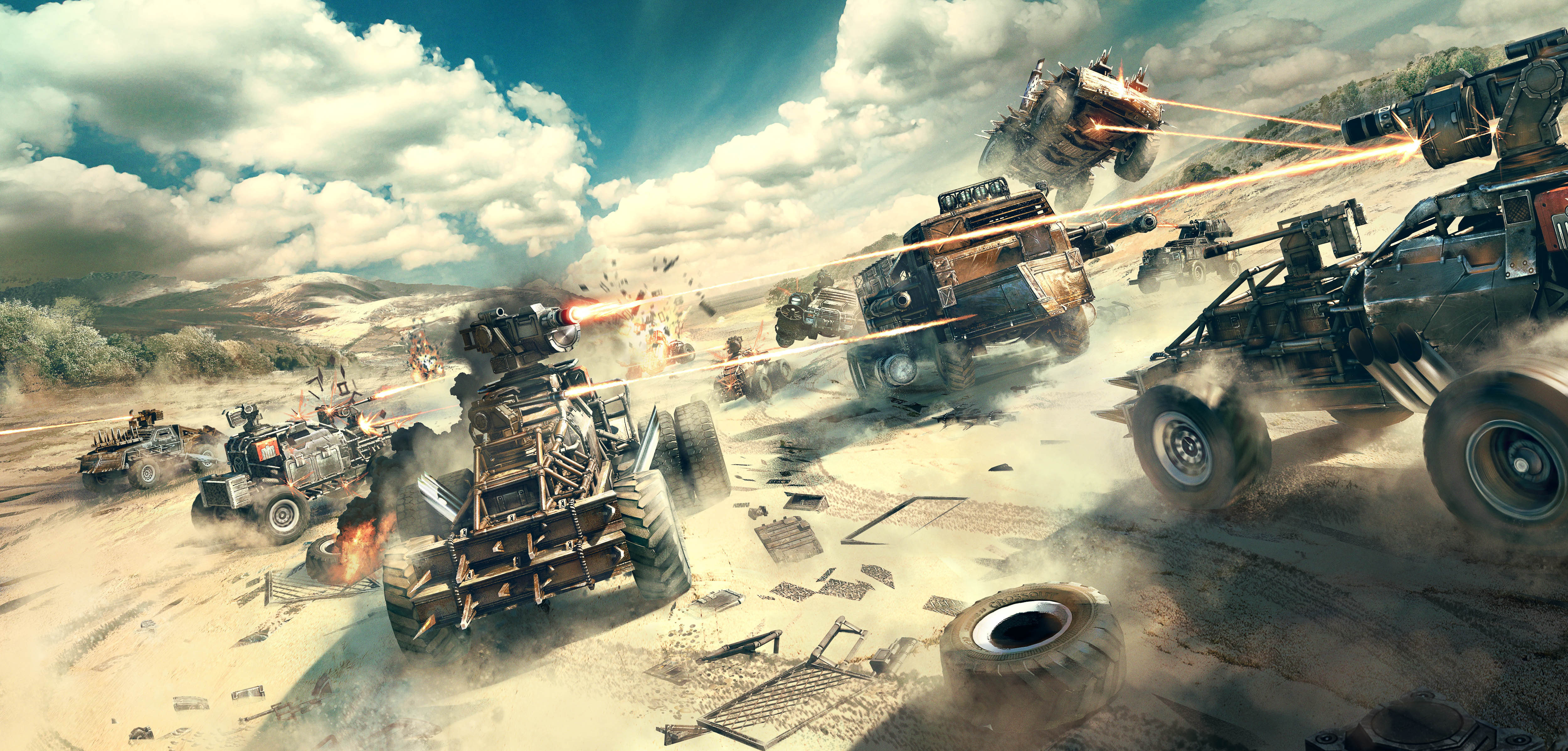

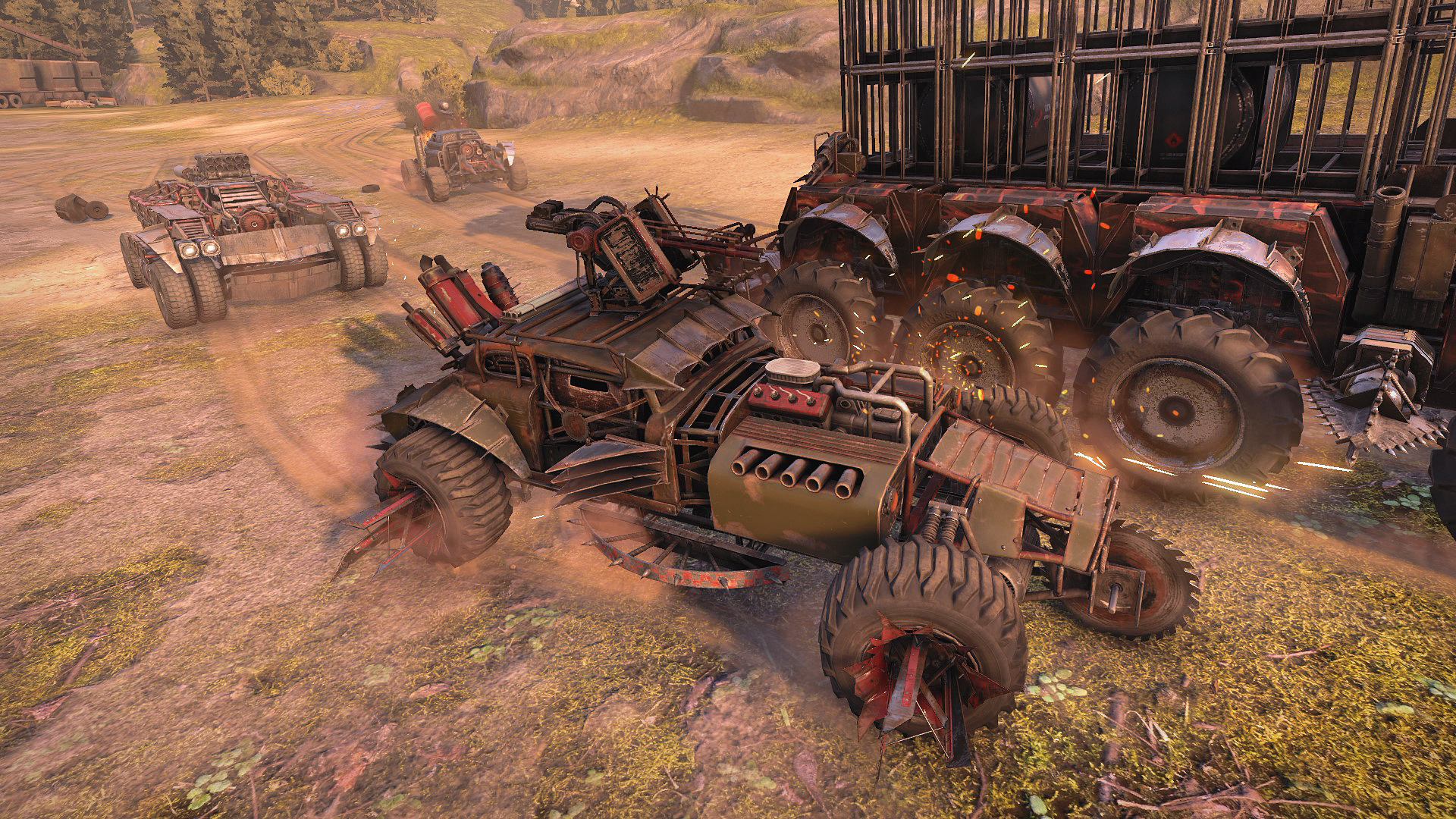
Some movie franchises are just ripe with video game potential, yet video-game film adaptations (and vice versa) are almost always miserable. There are a few exceptions, such as Alien: Isolation, but it seems that if you really want to meld the two mediums, then you can’t go beyond one sampling the premise from the other. Take Mad Max: Fury Road for example. The tie-in game, Mad Max, was moderately well received, but it really didn’t capture the essence of what gamers want out of that franchise--lunatics engaging in post-apocalypse vehicular combat. What would happen if you stripped away all the plot of the films, let players build their own cars, and pitted everyone against each other? You’d get Crossout.
Coming from Gaijin Entertainment of War Thunder fame, Crossout is a free-to-play, third-person, vehicular combat game that’s centered around building your own vehicles from the ground up. Players fight in a mix of team-based PVP, co-op PVE, and free-for-all PVP missions to earn resources and experience. Resources are needed for crafting vehicle modules, and experience is needed to raise your level to unlock new vehicle parts. There are other nuances, such as the market where you can trade crafted parts and resources at floating prices, but the focus of the game is undeniably constructing your rides.
Your vehicles are your avatars in Crossout. You have complete freedom to change or rebuild any of your vehicles whenever you want, but you can only save as many configurations as you have slots for. Vehicles consist of modules and structural parts. The first are the interactive parts of your vehicle, including the weapons, engines, and methods of locomotion. These are all craftables. The second, structural parts, are what you use to build the shape, look, and armor of your vehicle. These are unlocked by your level and are untradable.
Crossout’s approach to unlocking means that building and combat go hand in hand. Think about it like playing with Lego: The higher your level, the greater the number and the more varied your bricks are.



Building occurs in the garage, which is a 3D-grid space that lets you lay down and attach parts based on welding points. Everything begins with frame parts. You can use as many as you want, but they all have to connect to each other. Directly attached to the frame are your vehicle’s cabin (which determines how much energy your vehicle has for weapons) and parts for movement (which include wheels, tracks, legs, or even more exotic things).
Over and around these basic components go your structural parts and weapon modules. Every part has a durability value and a weight value. The former dictates how easily the part can be shot, blown, or knocked off in combat, whereas the latter determines how heavy and slow your vehicle is. An effective combat vehicle balances weight with smart and sturdy construction. It avoids limiting its own weapon’s field of fire while protecting its vital components.
Needless to say, Crossout isn’t just about building combat vehicles. It’s also about building whimsical, hilarious, and all-around awesome rides that express your own creativity. The game developers know this, so they provide the Exhibition database for players to share their creations with the community. Some people will make theme-based builds (like the ones pictured below) for fun, whereas others will try to make practical combat versions of their favorite real-life vehicles.
Get Tom's Hardware's best news and in-depth reviews, straight to your inbox.
Although all matter of hilarity can be found on the Exhibition, the majority of players builds will end up looking like a Mad Max-inspired vehicle. That is still the central premise of Crossout, after all. The games weapons, maps, game modes, and lore all revolve around factions of fanatical, mohawk-touting maniacs.

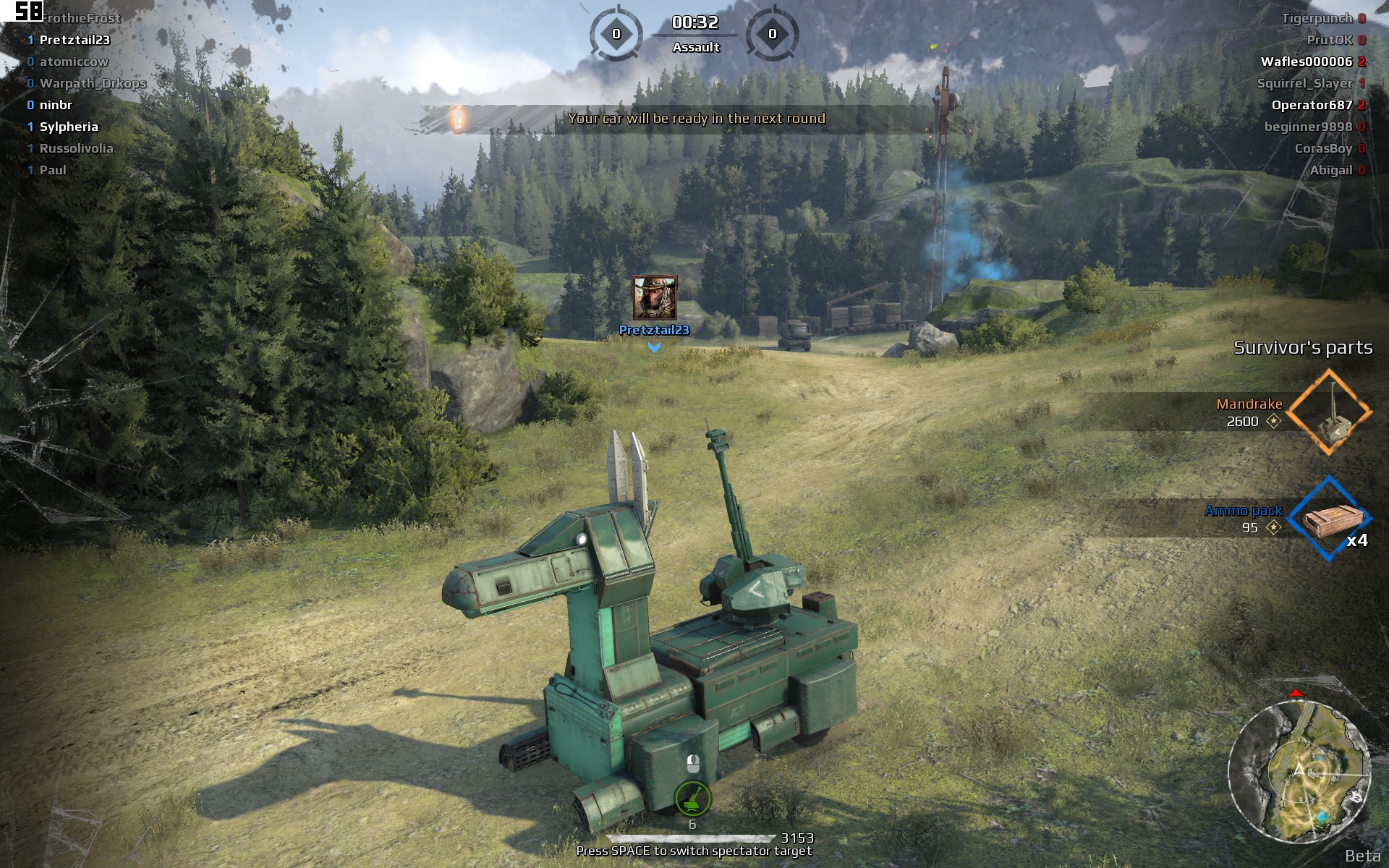
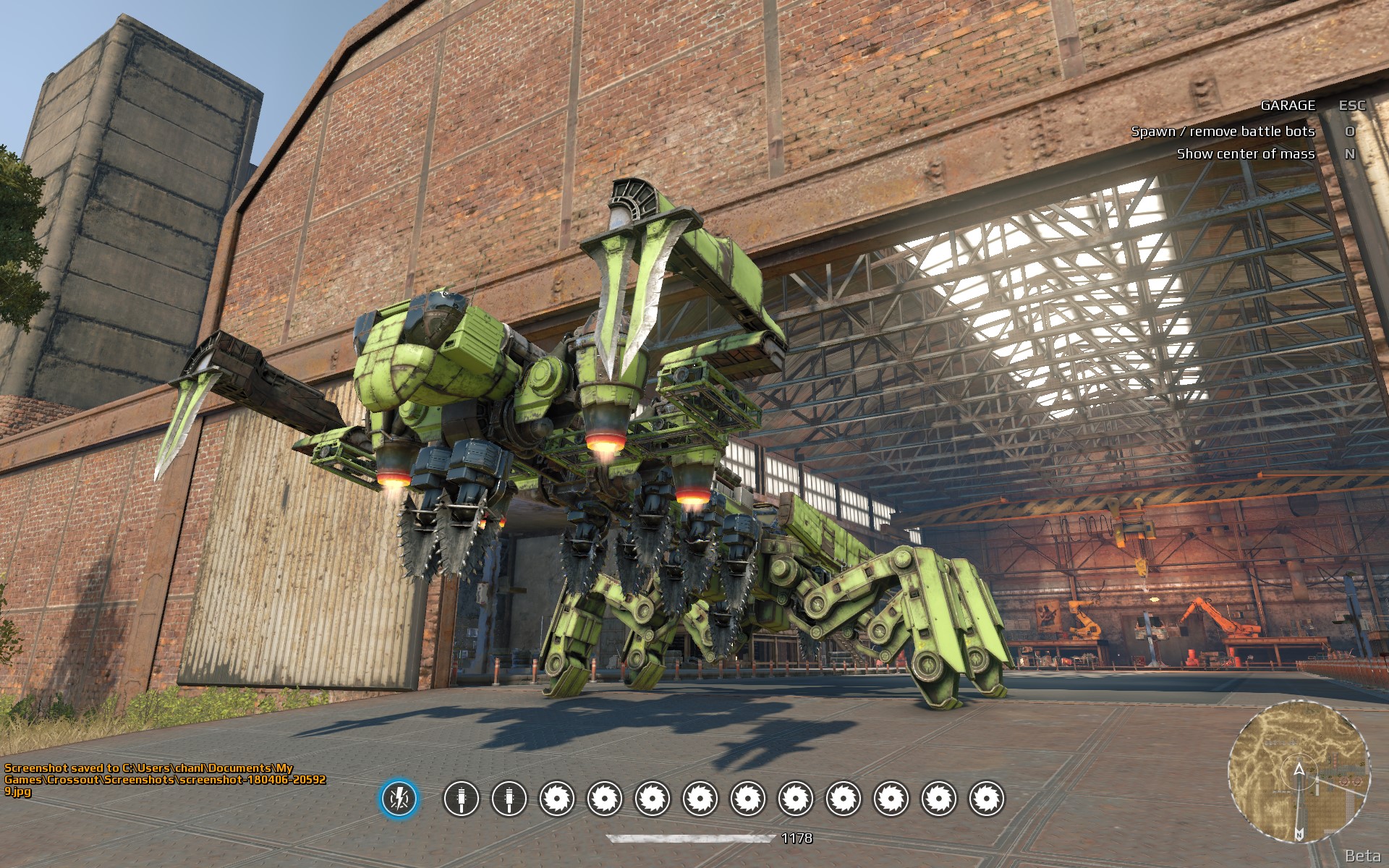
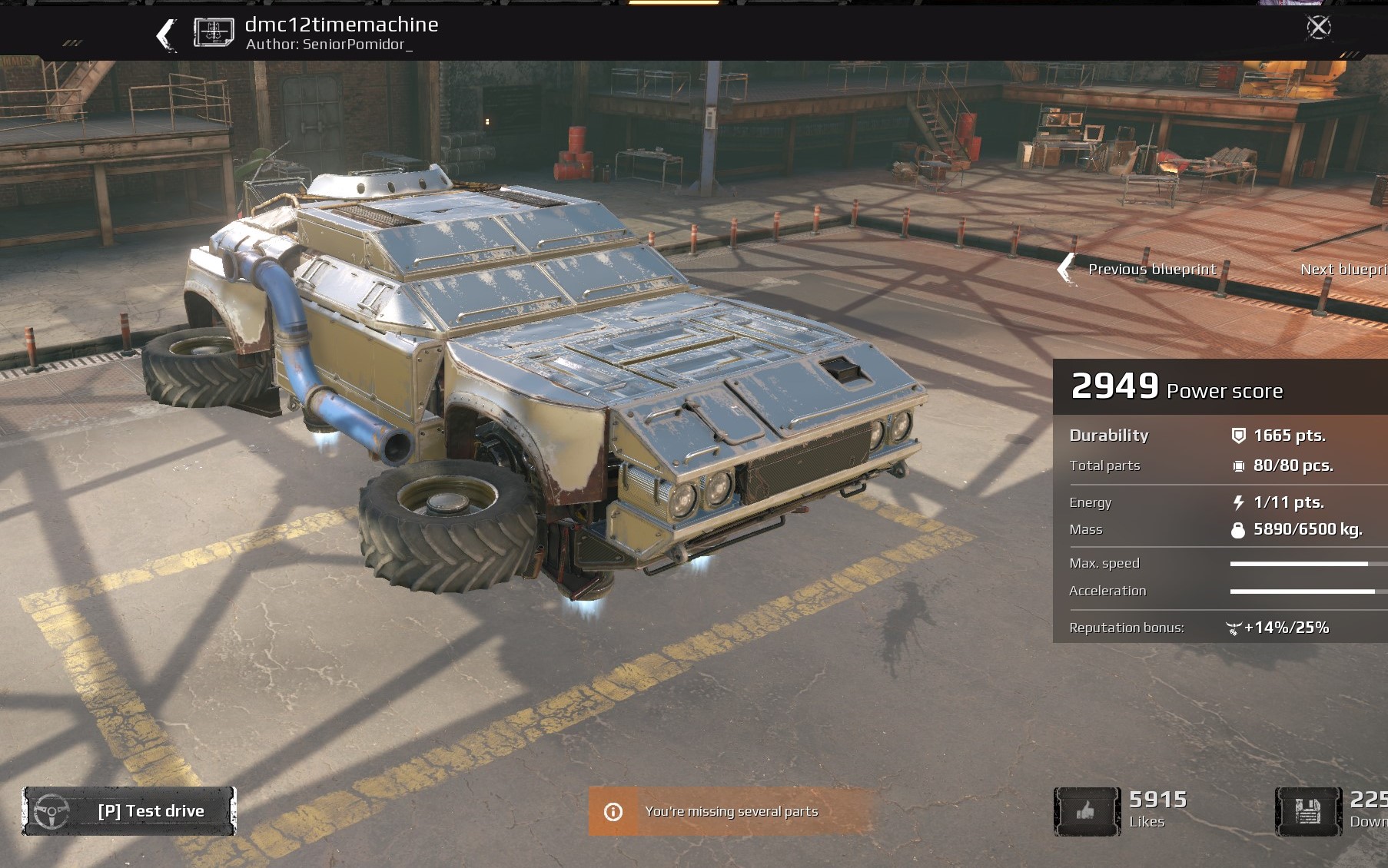
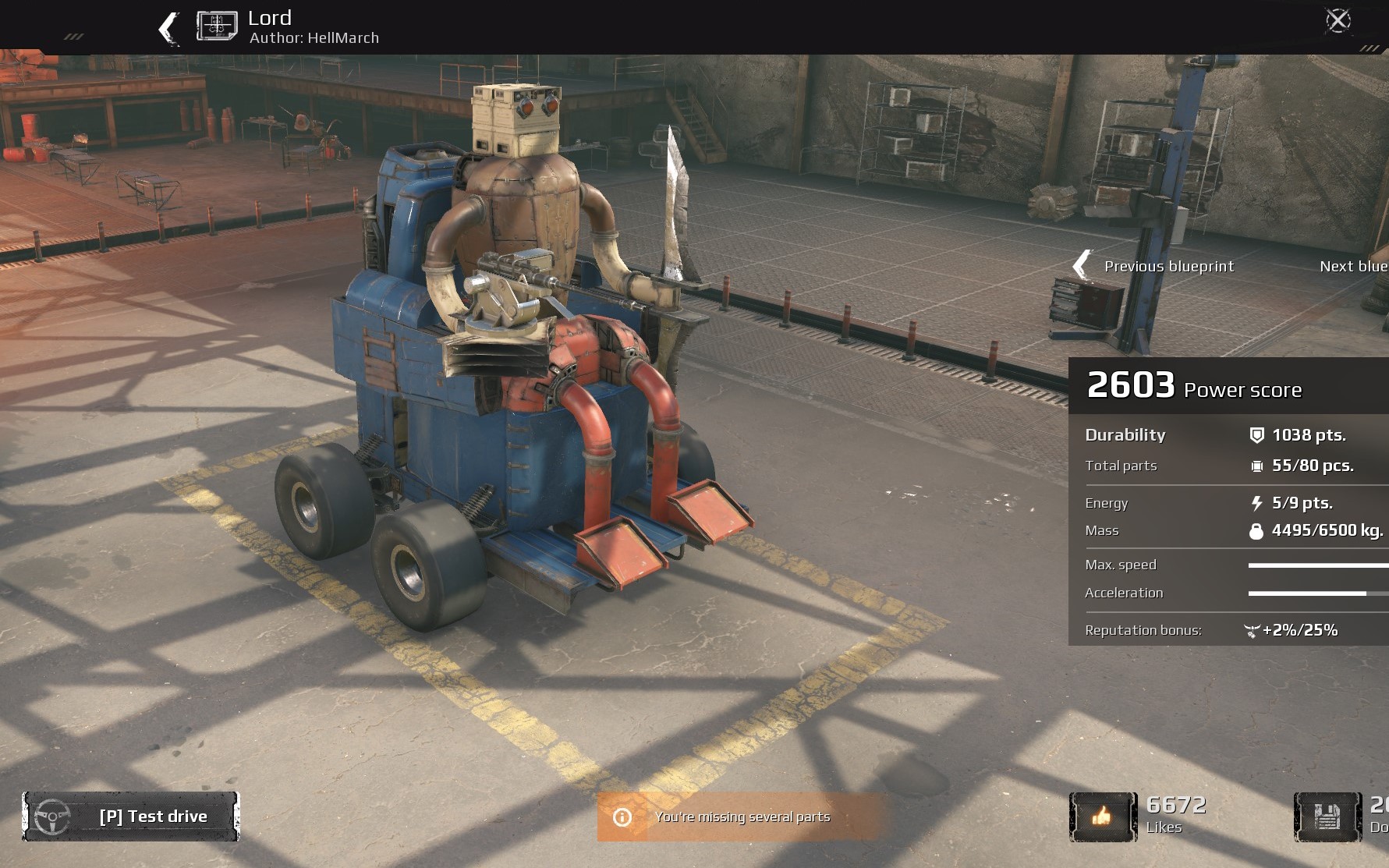

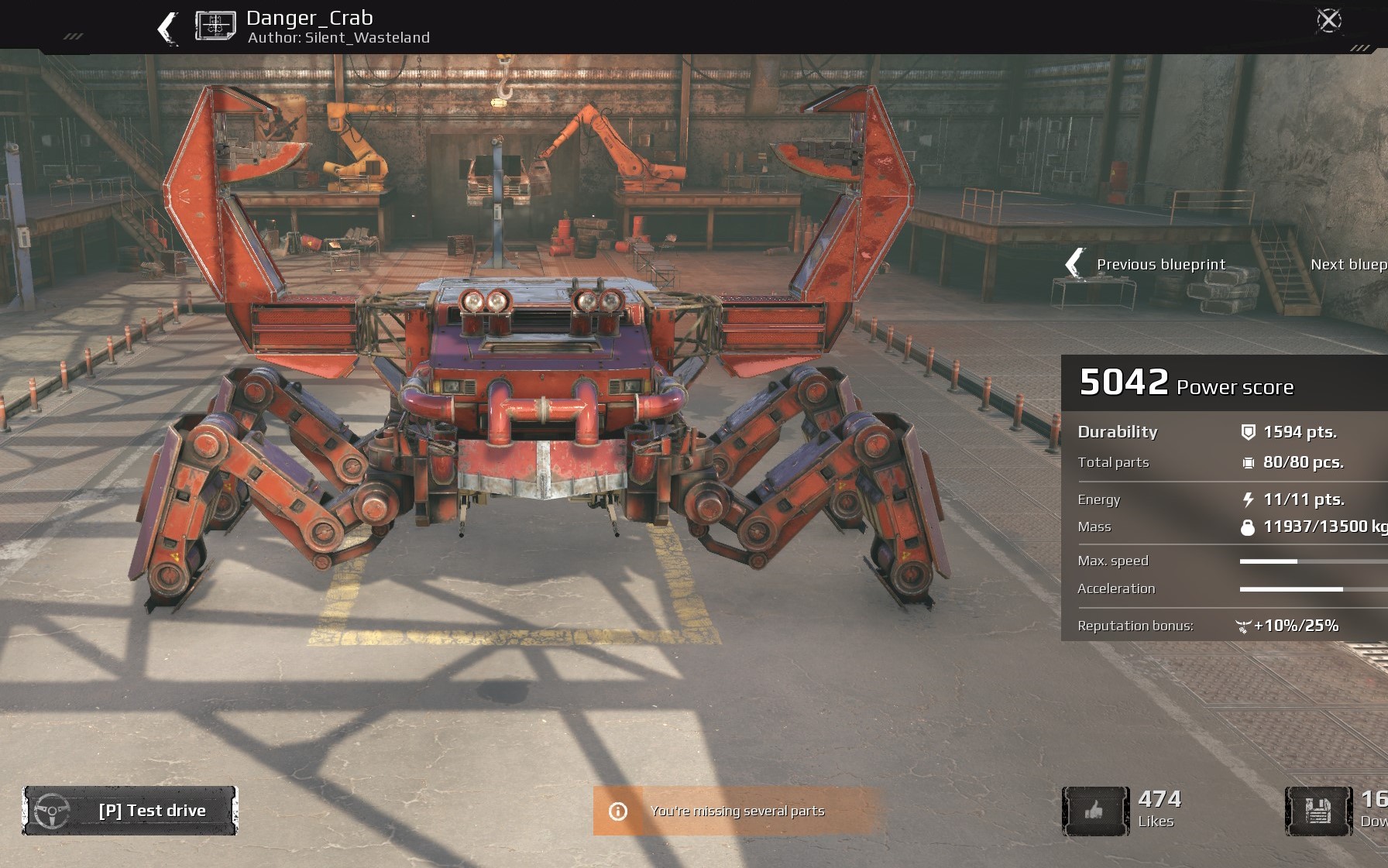


The actual gameplay is quite unlike most free-to-play games in that it’s not very competitive. PVP matches are extremely short, ranging from two to five minutes. They are the typical affair of king-of-the-hill mixed with team deathmatch. Co-op PVE raids are longer, revolve around a progressing set of objectives, and have more game modes. My personal favorite is chase, which involves running down a convoy that’s headed by a massive AI-controlled boss.
The final mission type is the brawls. These are the most varied events and are always free-for-all affairs. There are variations of deathmatch, but there’s also racing or capture the flag. Raids and brawls change according to a time schedule, so there’s always a variety of game modes available.
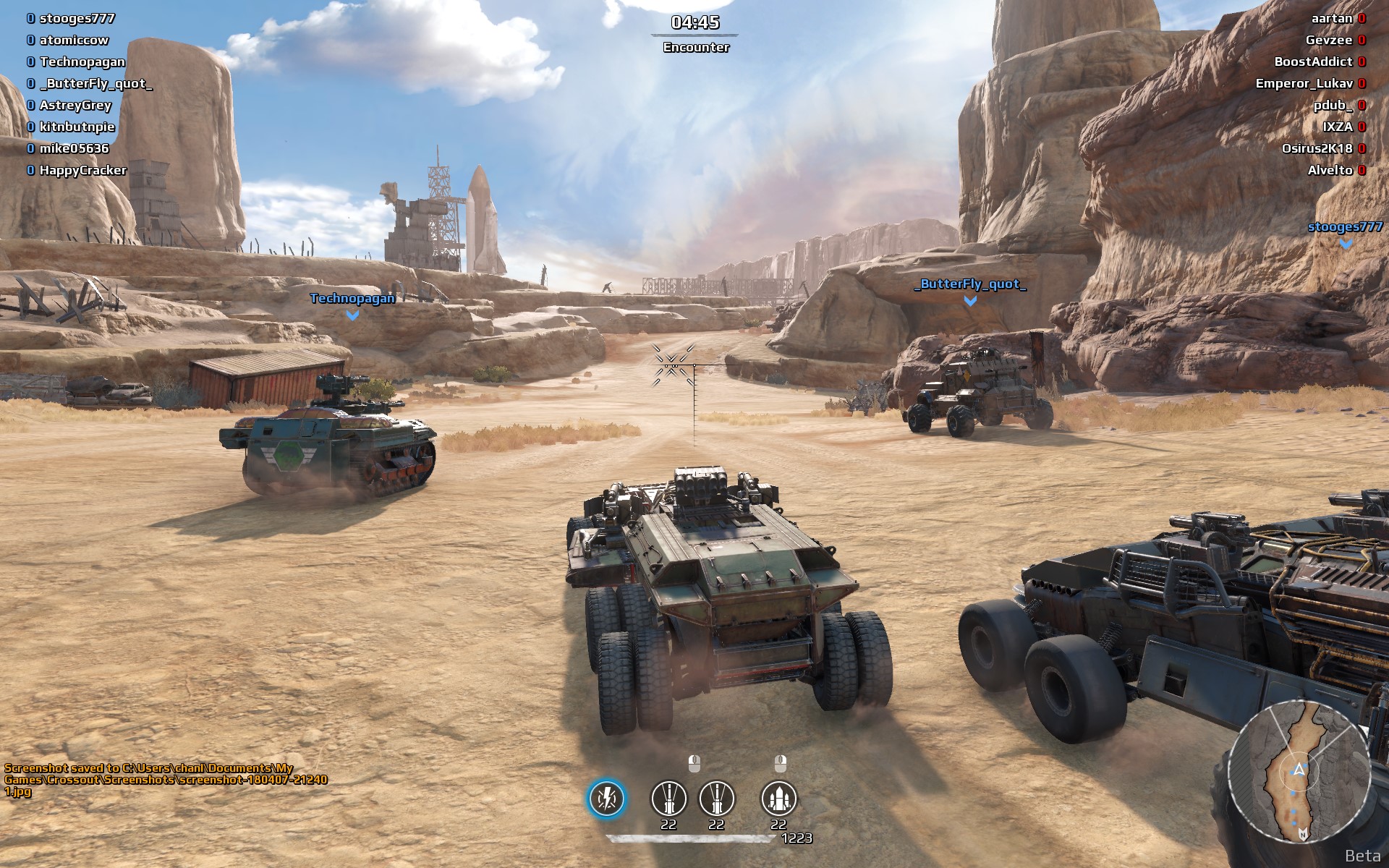

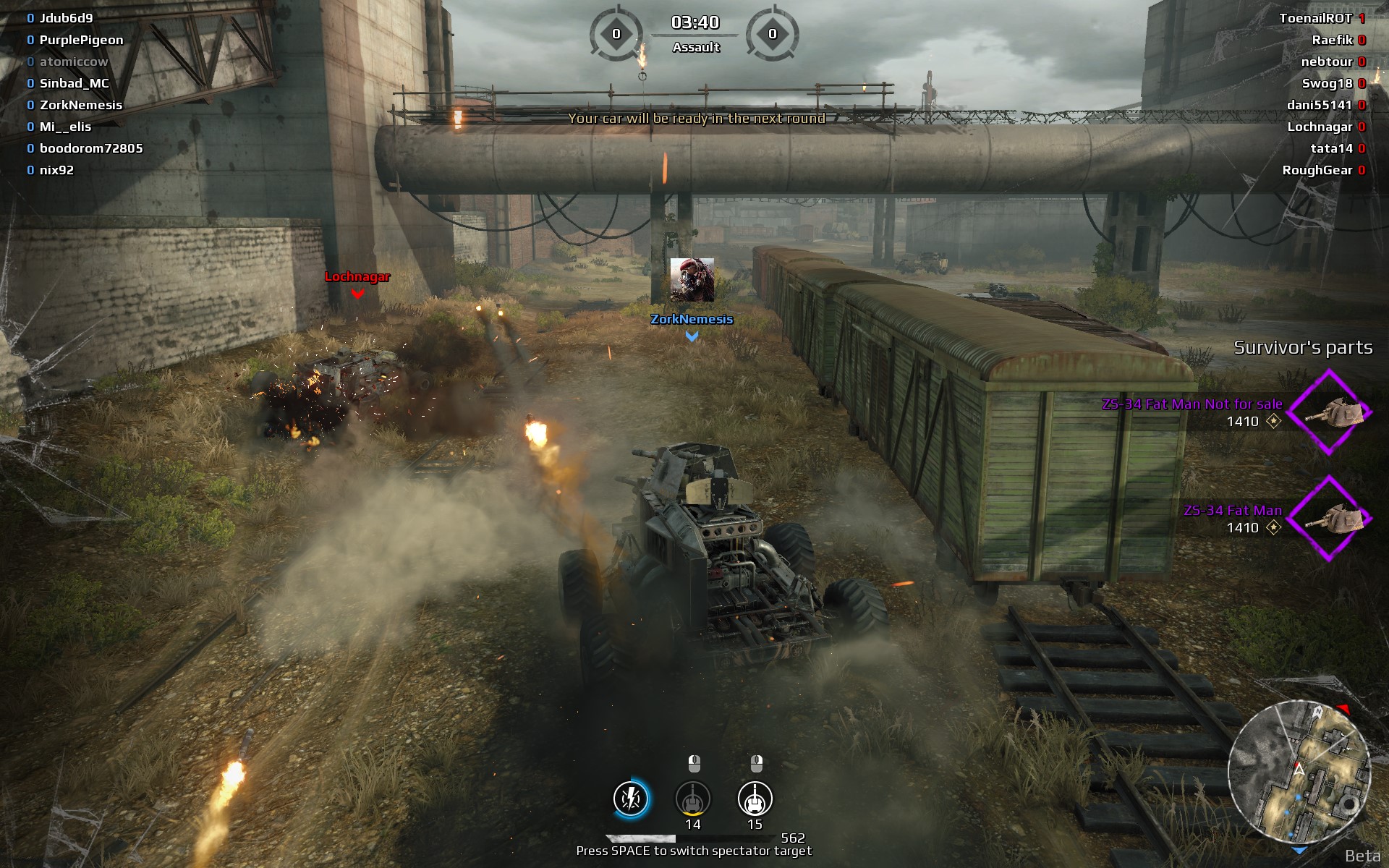
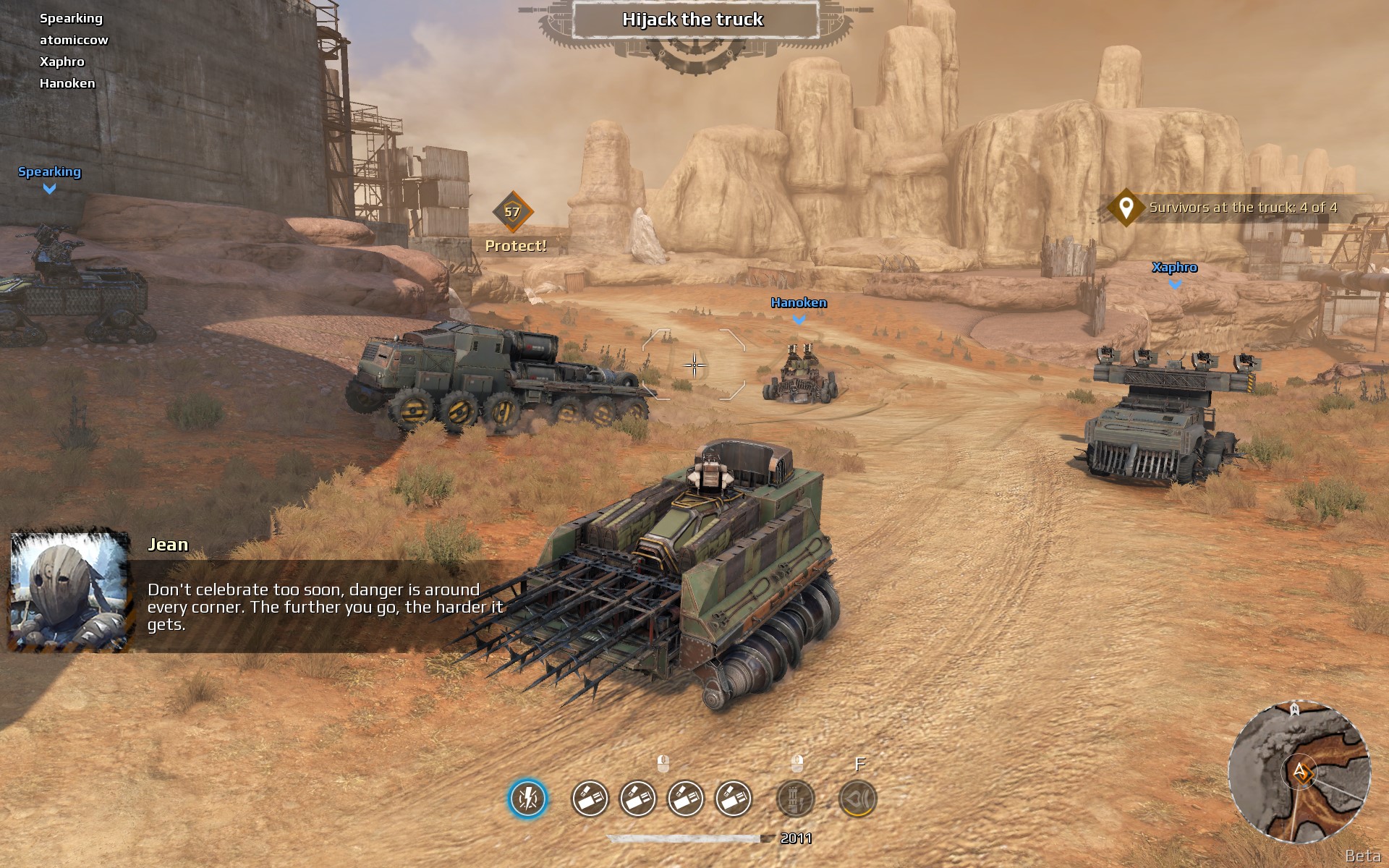
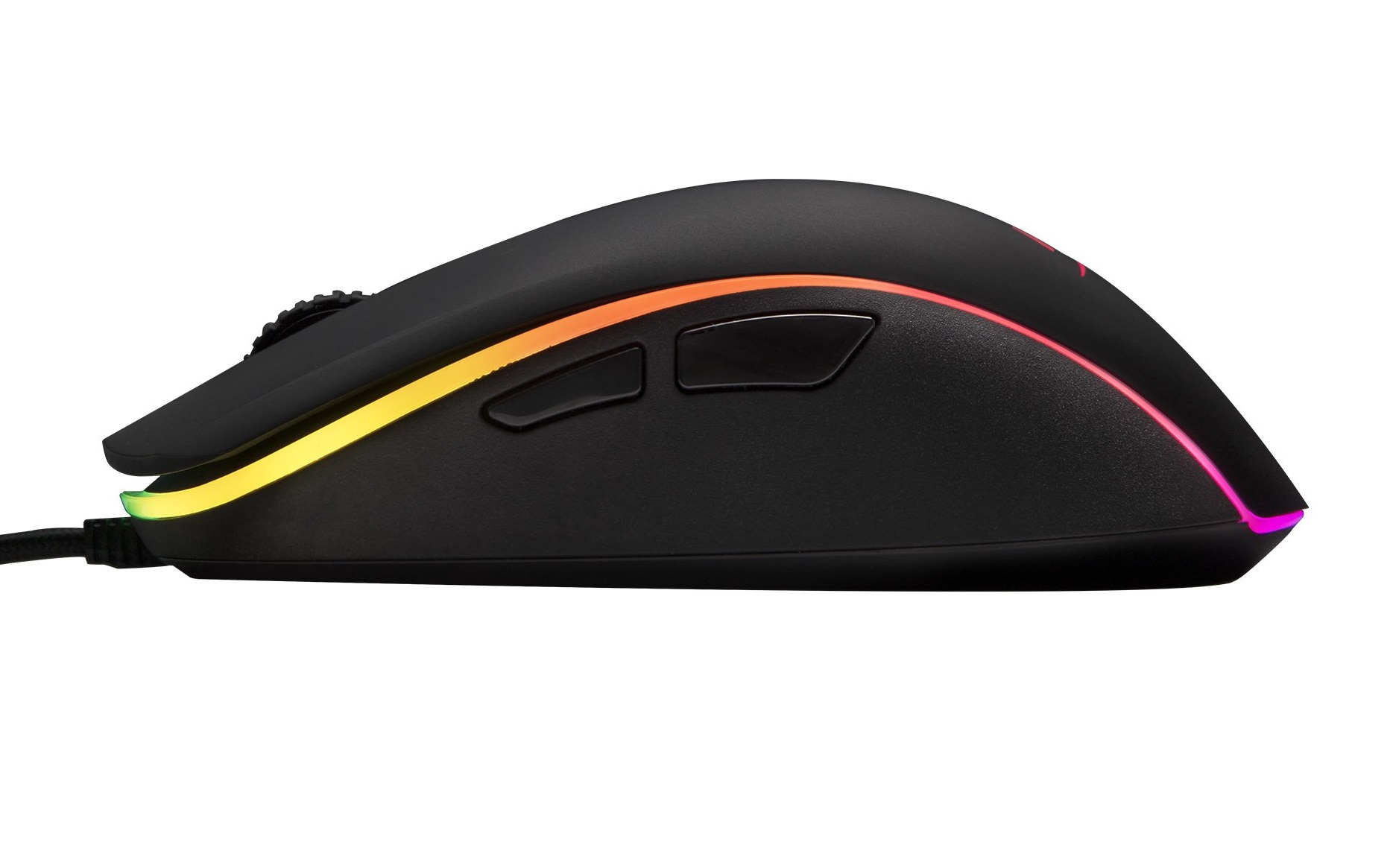

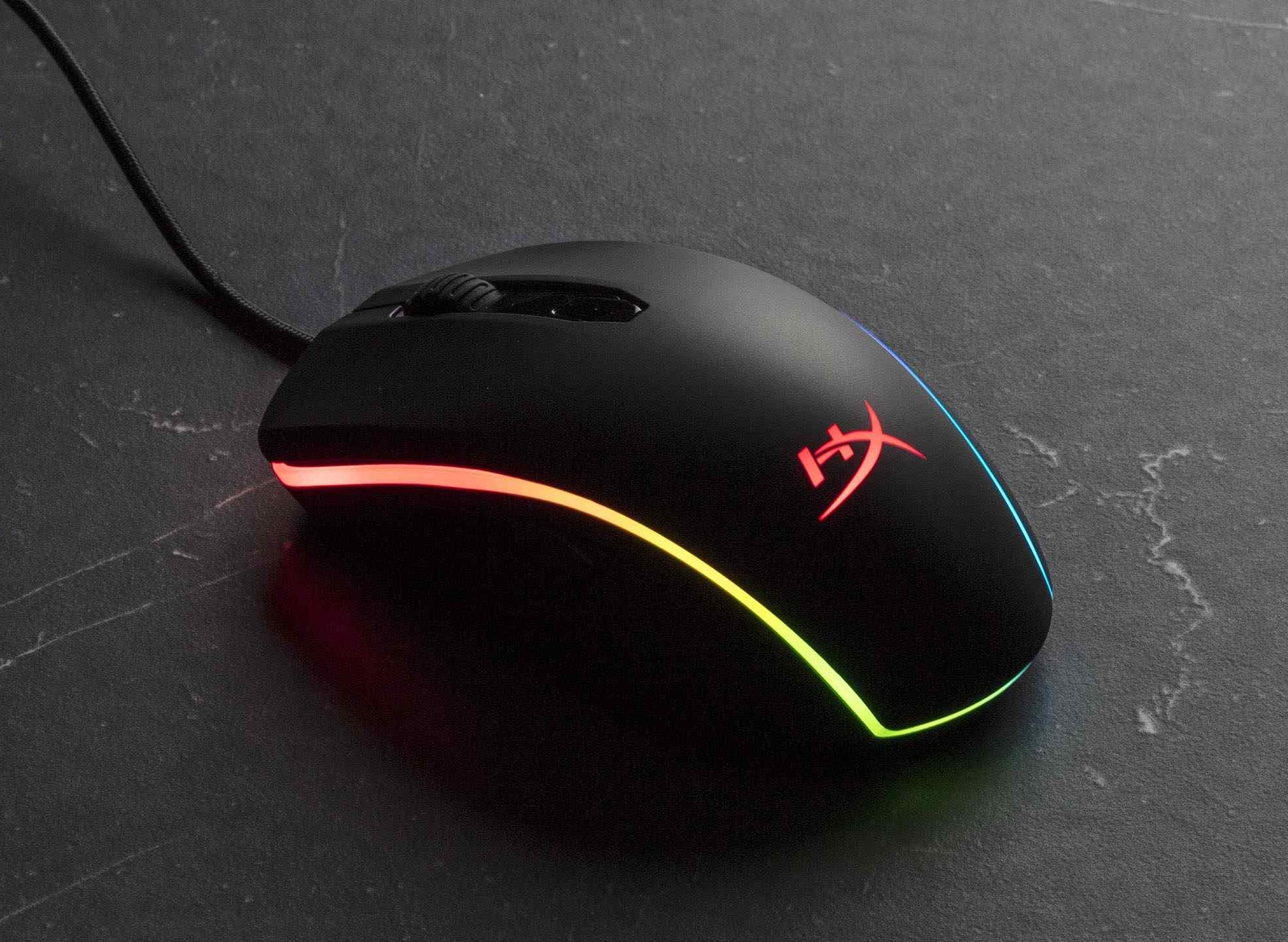
I have no real complaints with Crossout’s gameplay. It’s not competitive, it’s not time-consuming, and I’m never left with the feeling that I’m grinding for something. In case you do begin to feel that way, though, you can always switch up your ride, draw inspiration from others in the Exhibition, or if you really need to, trade your parts for others on the Market.
The developers are supporting the game with their full effort, too. Crossout is barely through its first year, and the game has already seen four or five major content patches. If Gaijin’s ongoing commitment to War Thunderis anything to go by, then Crossout will continue to massively expand. Also, I have to reiterate how refreshing it is that Crossout isn’t a competitive game on any level, unlike excellent but sometimes difficult titles like Overwatch and PUBG. (You can get a good idea of how the developers’ view their game by checking the content on the game’s official Youtube channel. Hilarious builds that sometimes borderline on exploits are regularly featured.)
Crossout activates a different part of your brain. It’s about building creatively and, sometimes, winning creatively. It’s not about balance necessarily, and it’s not about clutch reflexes. There’s always room for a good laugh, and there’s always something you haven’t thought of. This ain’t Mad Max’s Thunderdome. This is Crossout.
-
Matt_550 Once you outgrow the initial workbenches and need to sell things on the market or spend money to rent the next tier of workbench. It becomes a total slogging grind. Still a great game, but the grind that comes with progression is pretty crazy.Reply